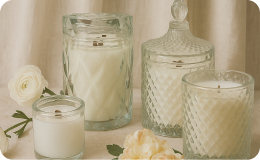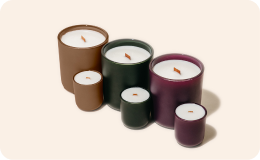How Long Does Bar Soap Need To Cure?
Soap curing time is one of the most frequently asked questions, and hotly debated topics among soap makers.
The typical answer has always been 4 to 6 weeks. But wait! Don’t stop here.
When makesy launched our cold-process soap category and advertised that our soap was safe to use and sell after a few days, it created a lot of questions among those who have been making cold process soap for a long time.
In fact, most were in disbelief and thought that only curing for a few days would lead to a mushy, low quality bar of soap.
We decided to run an experiment that has taken place over the last few months to show the difference in performance between bars that have cured between 2 to 14 days vs a bar that has been cured for 6 weeks.
All of the bars utilize our recommended cold process soap formula featuring the trinity blend.
saponification vs. curing

Before we get into the data, let’s make sure we all understand a few key points. ALL soap is safe to use after 48 hours.
The process of saponification in which fats (oils, butters) and alkali (sodium hydroxide) combine to form soap only takes 48 hours. This is really an undisputed scientific fact in the soap world.
After 48 hours, the sodium hydroxide will be gone from your soaps, assuming your recipe and measurements were all correct. Saponification is different from curing.
When we refer to curing, we are referring to the additional water within your soaps evaporating. When you make soap, you combine water and sodium hydroxide (or you can use our premade sodium hydroxide solution and skip this step).
The longer your bar cures, the more water is evaporated, creating a denser, harder, and longer lasting bar of soap.
The main reason why some soap makers disagreed with our process is because they felt it did not allow the bars enough time to cure.
As bars cure, they will lose some of their “water weight”. This is important for soap makers who intend to sell their product as a bar must list an accurate net weight.
All of the bars in our experiment lost between 0.1 to 0.2 ounces of weight during the curing process. Most soap makers selling their product will utilize the same recipe over and over again.
This allows you to determine your final cured bar weight for each formula and then package & label your soaps with an accurate weight, without waiting 4-6 weeks.
If you are a soap maker and looking to scale, being able to sell products without having to wait all this time is indeed a game changer.
You can determine your final “cured” bar weight by weighing your bar daily. After it weighs the same amount for three consecutive days, your bar has reached its final cured weight.
the experiment

Back to the experiment. As we like to say in soap making, hold onto your hair nets… this is going to be shocking.
For those of you who believe that a longer cure time results in a longer lasting bar of soap… we agree with you! And so does the data!
For those of you who think you can use our formula and bypass 4-6 weeks of cure time, and have a sellable bar within a few days… we agree with you! And so does the data!
Wait… what?! Doesn’t this information contradict itself? Have we been sniffing too much fragrance lately? Stay with us here.
Back to our experiment: We made 14 bars of soap utilizing our cold process soap formula. All bars had the exact same ingredients and fragrance. Bars #2 through #14 were all used sequentially, with 1 additional day of cure time for each bar.
For example, the first bar was washed after 48 hours, the second bar after 3 days, then 4 days, 5 days etc. Bar #1 had cured for 6 weeks before being washed.
Each bar was weighed daily & then scrubbed vigorously for 30 seconds under warm water. The bar was then set on a dry location after each wash.
Hint: this is a HUGE part of making soaps last, regardless of cure time. Soaps that sit in a shower in a puddle of water will dissipate much faster than a properly cared for bar of soap.
the results
All the bars lasted at least 40 washes per 4 ounces of soap. Say what?!!!
Most bar soaps are expected to last between 2 to 3 weeks. A month is considered excellent and beyond that… well that’s just beyond our suds-imation (imagination, but make it bubbly).
Handmade soaps typically are sold for $6-12 depending on the ingredients, size, and brand position.
The fact that someone can feel good & cleanse their body with a moisturizing and handmade bar of soap (for the price of 1 to 2 cups of coffee) for 40 DAYS is a pretty great deal if you ask us.

Ok, so why did these bars last so long, you ask?
Here are some key aspects to creating a bubble-tastic bar of soap:
1. It’s all about the base! The base oils used in your formula will determine all of the characteristics of your final bar. Our formula uses the perfect trio of base oils:
Olive Oil: This is rich in fatty acids and makes the bar moisturizing and hydrating
RSPO Palm: This makes the bar hard and last a long time
Coconut Oil: This creates a rich, fluffy lather and makes the bar cleansing
Utilizing our formula & the trinity blend as your base will create a high quality, long-lasting bar after only a few days cure time. Please note: using a different formula will not yield these same results.
2. Educate customers about how to care for your handmade soaps! A soap sitting in a puddle of water 24/7 is going to dissipate quickly. It’s important for soaps to be stored in a dry place. We love these soap savers made from bioplastics.
3. Test your own formula & determine your personal preference on how long you want your bars to cure based on their performance and how long they last.
Our bar that had cured for 6 weeks was the most long-lasting. No surprise there! That being said, all the bars in the experiment (even the one that had only cured for 48 hours), performed far above average.

final thoughts on soap curing
For those looking to scale their soap making business, needing to sell soaps to meet a short turnaround time, or you are impatient (hi, its me), this experiment yields really promising results that you CAN indeed create a bar of soap that performs excellently, without a 4-6 week cure.
For those who do not have time or financial constraints, let that bad bar cure! :)










